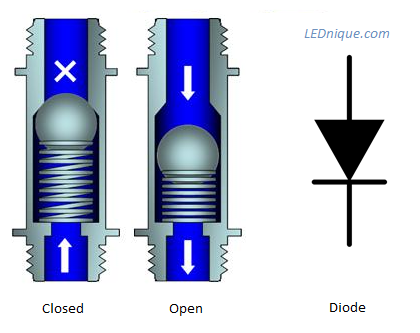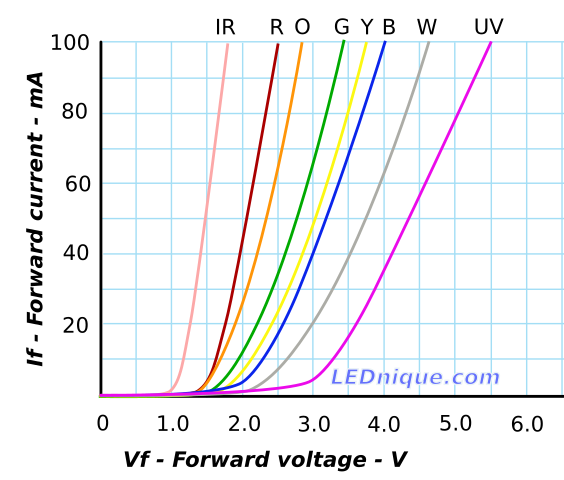A light-emitting diode semiconductor light source. It is a p–n junction diode, which emits light when activated.
Quick points
- LEDs are semiconductors.

LED component parts. - The ‘D’ stands for ‘diode’. They only conduct current in one direction so they have a positive and a negative terminal.
- The colour of the LED light depends on the specific semiconductor used in the LED chip.
- The plastic body is usually coloured to enchance the colour emitted but clear bodied LEDs are common and, of course, essential for white LEDs.
- Unlike regular bulbs, LEDs generally require current limiting to prevent damage.
Technical
When a suitable voltage is applied to the leads, electrons are able to recombine with electron holes within the device, releasing energy in the form of photons. This effect is called electroluminescence, and the color of the light (corresponding to the energy of the photon) is determined by the energy band gap of the semiconductor.
An LED is often small in area (less than 1 mm²) and integrated optical components (lenses) may be used to shape its radiation pattern.
LED -> diode -> non-return valve
LEDs are diodes (that emit light). Diodes are electrical non-return valves. ((What Americans call “tubes” the English call “valves”. This is due to their rectification properties and that they behave like a certain type of valve in a water system.))

If you look at the check-valve in the figure above, it should be clear that the spring normally keeps the ball in position and prevents back-flow. When “forward-biased” the ball shut-off can be moved against the spring but it will take some initial pressure to move the ball. This results in a pressure drop across the valve: the pressure downstream will be less than the inlet pressure.
In a similar manner the PN junction causes a voltage drop. For silicon it is about 0.7 V. Since there is a PN junction in the base-emitter of your transistor you can expect a 0.7 V drop across it when forward biased.
Pushing the analogy a little further, we can also see that further pressure drop will occur due to the constriction of the valve. The more water we push through the valve the more the pressure will drop. This will be added to the initial pressure drop required to open the valve in the first place. The resultant pressure drop graph will look remarkably like one of the I vs V curves below.

Read more about IV curves.
